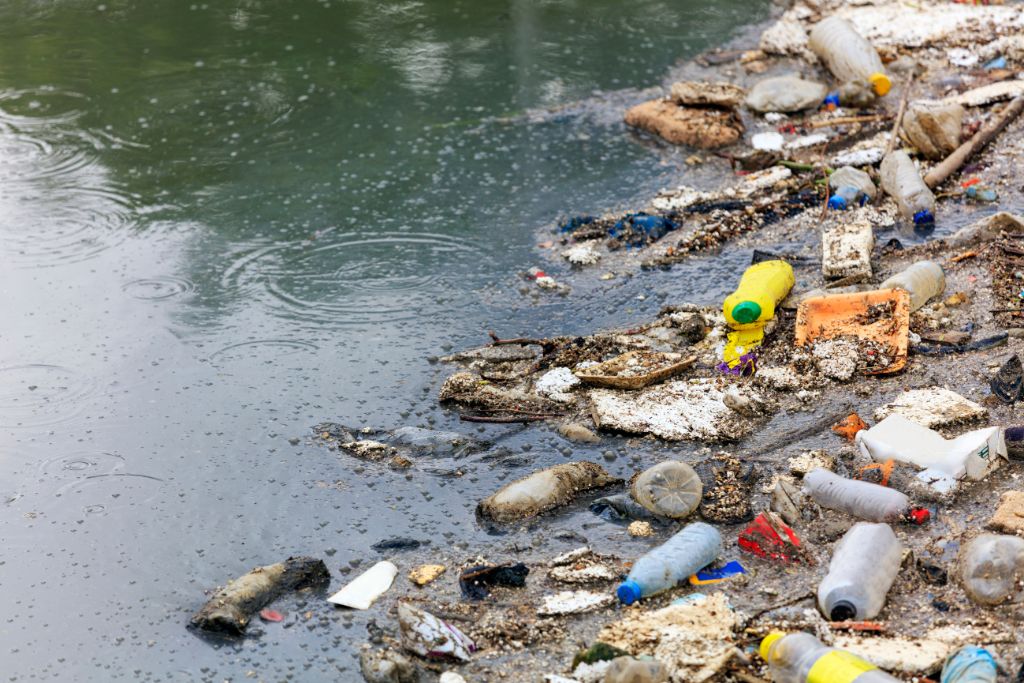Historically applied in environmental law, economists are increasingly exploring the polluter pays principle in climate policy to address greenhouse gas emissions. This principle is materialised through a carbon price, employing mechanisms like carbon taxes and emissions trading schemes to ensure that polluters are financially responsible for their impact on climate change and air pollution.
—
What Is the Polluter Pays Principle?
The polluter pays principle is the idea that the costs of polluting activities should be borne by the party who caused it, rather than the individual or community who suffer from the consequences of pollution. For example, a shipping company that spills oil into a marine ecosystem during its operations will bear responsibility for cleaning up the oil spill and mitigating its ecological impact.
This principle is grounded in the belief that externalising the costs of pollution onto society is unjust and instead advocates that the parties responsible for environmental harm should be the ones facing the consequences of their own actions by mitigating and rectifying the damage.
“Polluter pays” is a component of a broader set of principles aimed at guiding global sustainable development, officially outlined in the United Nations’ 1992 Rio Declaration. The principle can be applied to various environmental challenges, including addressing industrial air and water pollution, combating deforestation linked to habitat loss, and mitigating the release of greenhouse gases (GHG) contributing to climate change. It has the potential to be used in designing policies to avert environmental harm before it takes place, or, in situations where pollution is unavoidable, the principle can be employed to reallocate or recover the expenses associated with environmental damage.
The Role of ‘Polluter Pays’ in Climate Policy
The polluter pays principle is applied commonly in environmental law to tackle environmental challenges – such as it has been the case in the Homestake Mining Company of California vs Mariano Lake and Smith Lake and India’s 1928 Air Prevention and Control of Pollution Act.
- The Homestake Mining Company of California vs Mariano Lake and Smith Lake case involved the contamination of water bodies by mining activities. The Homestake Mining Company faced legal action due to pollutants seeping into both Mariano Lake and Smith Lake, causing environmental damage on the lands of the Navajo Nation. The polluter pays principle was central to the resolution, with the company held financially accountable for cleanup and mitigation efforts.
- India’s 1928 Air Prevention and Control of Pollution Act aimed to address air pollution concerns in India’s rapidly industrialising urban centres. The Act introduced regulatory mechanisms to control emissions from industries and vehicles, with provisions incorporating the polluter pays principle. Industries failing to adhere to emission standards faced penalties and fines, which encouraged compliance and fostered a culture of environmental responsibility within the business community.
However, economists are increasingly looking into how the principle can be applied to tackle GHG emissions in climate policy.
Greenhouse gases are one of the main forms of pollution in modern societies due to their impact on the climate, as well as their contribution to ambient air pollution. According to the World Health Organisation (WHO), ambient air pollution in 2019 was associated with approximately 4.2 million premature deaths globally.
Despite the concerning numbers, the recognition of the link between human activities, increased GHG emissions, and climate change has been slow to materialise in society. Consequently, those emitting these gases are usually not held accountable for the pollution they cause. When this occurs, the costs associated with emissions are not covered by the emitters, and the expenses end up being externalised to society. In economics, this is referred to as a negative externality which is deemed as a type of market failure – where a market is not able to allocate resources to deliver an optimal result. The polluter pays principle aims to correct market failure and its resulting social injustice by shifting pollution costs from society to polluting companies, while simultaneously reducing emissions.
The application of the polluter pays principle to greenhouse gas emitters involves the use of a carbon pricing. This entails imposing a fee on greenhouse gas emissions, reflecting the potential future costs associated with climate change, thereby compelling emitters to internalise the pollution they generate as well as their expenses.
This is referred to as the Social Cost of Carbon (SCC), and it is widely endorsed by mainstream economists as the most effective means of carbon pricing. Carbon pricing can then be adopted into stand-alone policies, including carbon taxes – which are designed to internalise the external costs associated with carbon emissions and operate by imposing a direct fee for each tonne of greenhouse gas emitted – and emissions trading schemes (ETS) – a market-based approach designed to reduce emissions that sets an overall limit or cap on the maximum level of emissions for a given time period and distributes permits or allowances for each unit of greenhouse gas among firms that produce emissions. Entities that can reduce their emissions more efficiently or at a lower cost than their allocated allowances may choose to do so and then sell their excess allowances to entities facing higher abatement costs.
This trading mechanism encourages emission reductions where they can be achieved most cost-effectively, creating economic incentives for businesses to invest in cleaner technologies and practices. The polluters have “paid” through ensuring they have enough permits to cover their total emissions for a given year.
You might also like: Explainer: What Is a Circular Economy?
Conclusion
The polluter pays principle represents an important mechanism for addressing environmental issues such as climate change. By holding polluters accountable for the environmental harm they cause and internalising the costs of pollution, societies can effectively reduce emissions while fostering economic incentives for innovation and investment in cleaner technologies.
However, doubts remain regarding its effectiveness and implementation. Despite mechanisms such as emissions trading schemes being economically and politically popular, and being increasingly implemented worldwide, greenhouse gas emissions are still increasing and pollution levels in many parts of the world – especially in Southeast Asia – are worsening. It is evident that there is a need for further efforts to address some of the operational challenges associated with emissions trading schemes and carbon pricing as a whole.
Some questions remain open. Do market based climate solutions in capitalist systems really work? Are these approaches capable of driving the necessary emissions reductions at the scale and pace required to mitigate climate change? Moreover, do they adequately address underlying systemic issues such as inequality and environmental justice within capitalist frameworks?
These questions underscore the need for research and policy innovation in harnessing the full potential of mechanisms applying the polluter pays principle.
This story is funded by readers like you
Our non-profit newsroom provides climate coverage free of charge and advertising. Your one-off or monthly donations play a crucial role in supporting our operations, expanding our reach, and maintaining our editorial independence.
About EO | Mission Statement | Impact & Reach | Write for us


















